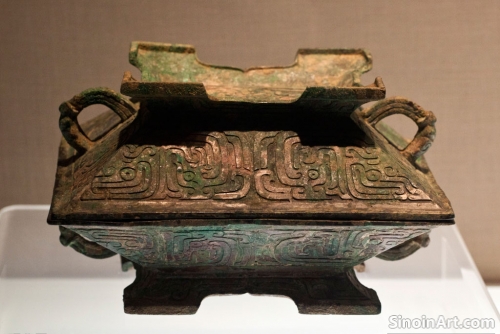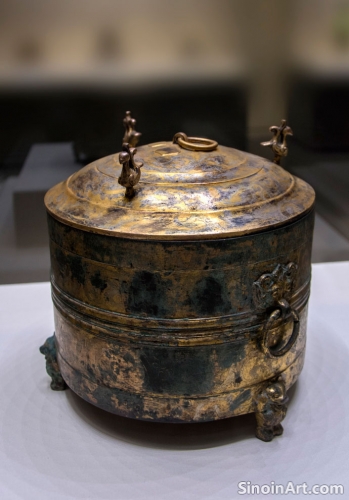The Use of Bronze in Ancient Chinese Water Management Systems: Irrigation and Hydraulic Engineering
|
Beyond the more commonly recognized uses of bronze, it also played a role in ancient Chinese water management systems, used to create irrigation devices, hydraulic engineering components, and other implements designed to control and manage water resources. The use of bronze for these purposes highlights the sophistication of ancient Chinese hydraulic technology. The careful management of water was an essential element of the economic life of ancient China.  Bronze was used to create valves, pipes, and other fittings in irrigation canals and reservoirs, helping to regulate the flow of water and ensure a reliable supply for agriculture. These bronze components helped to create more efficient and more reliable water distribution systems. These improvements in technology helped to further expand agricultural production.  Bronze was also used to make the tools and implements used in the construction of dams, canals, and other water management projects. The use of bronze tools made for better and more durable tools for large scale construction projects. The careful management of resources, both human and material, was a key element of ancient Chinese civilization.  The creation of these systems played a central role in the agricultural productivity of ancient China, allowing for the large-scale cultivation of crops and the sustained population growth of the region. The innovations in irrigation helped to create a food surplus that could sustain a larger, more populous, and more complex society. The use of bronze in water management reflects the importance that was placed on technological innovation and resource management in ancient Chinese society. The study of these hydraulic systems helps to illuminate the scientific and engineering knowledge of the time. The combination of science and technology helped to shape both the economy and the culture of ancient China. |
Tag : bronze water management, ancient irrigation, Chinese hydraulic engineering, agricultural technology, water resources
Related information
- Bronze Ware and Ancient Chinese Medicine: Tools and Beliefs About Health
- Analyzing the Surface Patina of Chinese Bronze Ware: A Story of Time and Environment
- Bronze Ware and the Development of Ancient Chinese Cartography: Maps and Measurement
- Bronze Ware and the Development of Chinese Writing: An Intertwined History
- The Use of Bronze in Ancient Chinese Transportation: Chariot Decoration and the Display of Power
This article explores the use of bronze in ancient Chinese medicine, highlighting the creation of surgical instruments, diagnostic tools, and vessels used for herbal remedies, and revealing the intersection of metallurgy and medical practices.
This article explores the surface patina of Chinese bronze ware, discussing its formation, its value as a historical record, the factors that influence its appearance, and the techniques used to distinguish between natural and artificial patinas.
This article explores the use of bronze in ancient Chinese cartography, highlighting its role in creating surveying tools, measuring instruments, and other devices used in mapmaking, and demonstrating its importance in facilitating the creation of accurate geographical records.
This article explores the intertwined history of bronze ware and the development of Chinese writing, highlighting the earliest forms of writing on bronze, the evolution of script styles, and the role of inscriptions in preserving history and culture.
This article explores the use of bronze in ancient Chinese chariot decoration, highlighting its role in communicating power and status, the visual symbolism used, and how these decorative elements enhanced both the aesthetic appeal and also the political message of these important vehicles of transport.